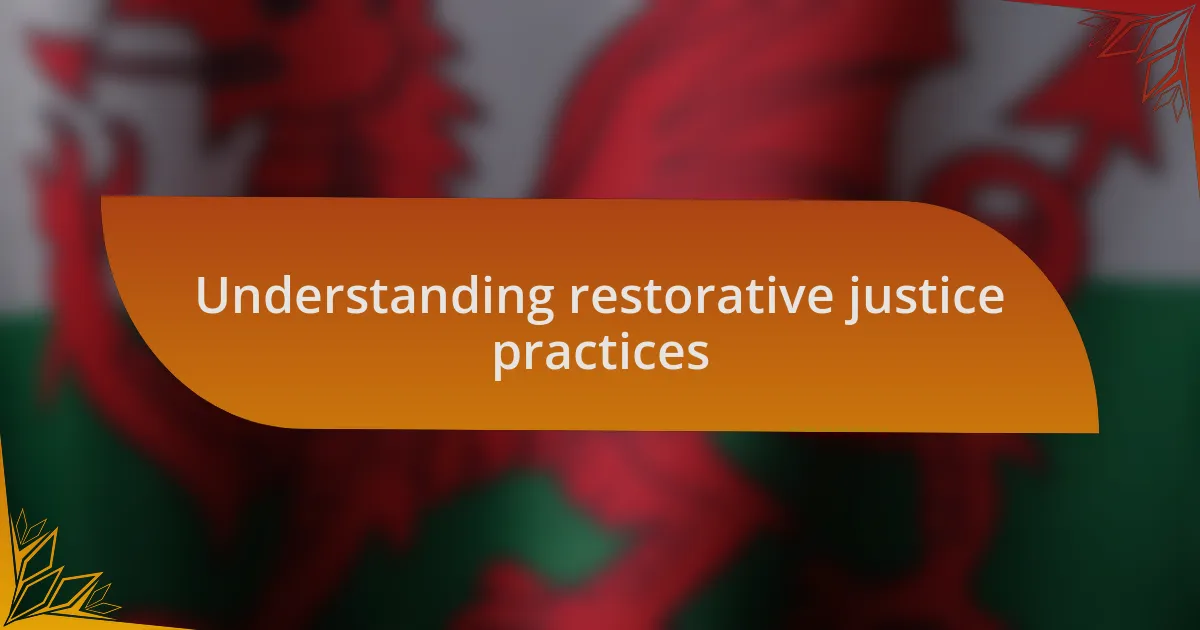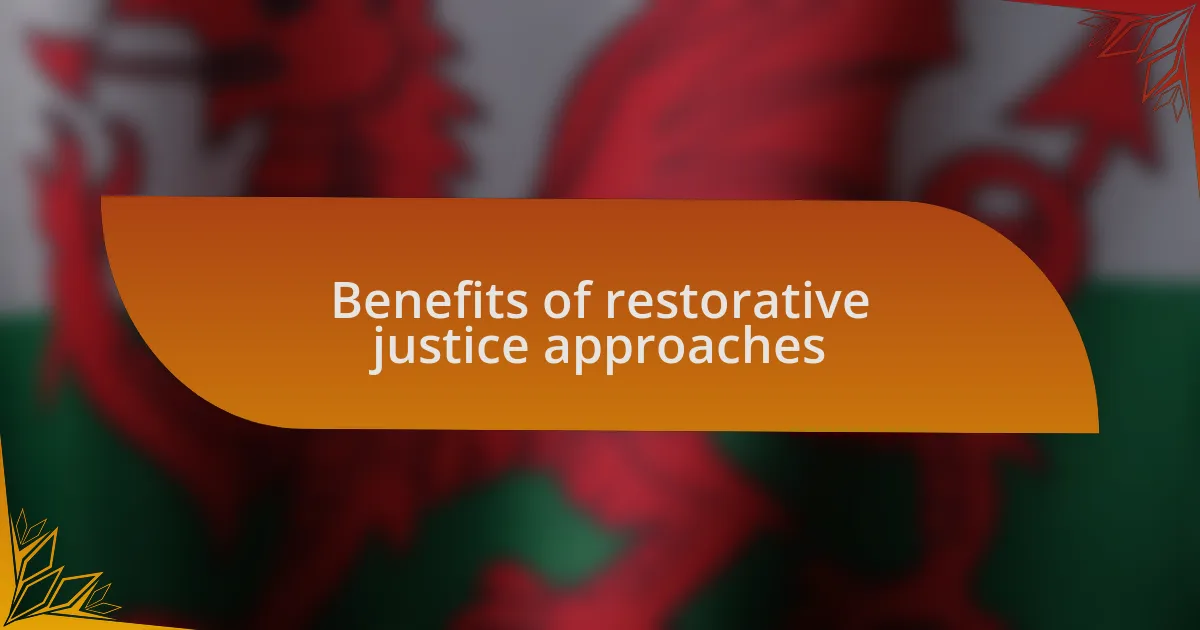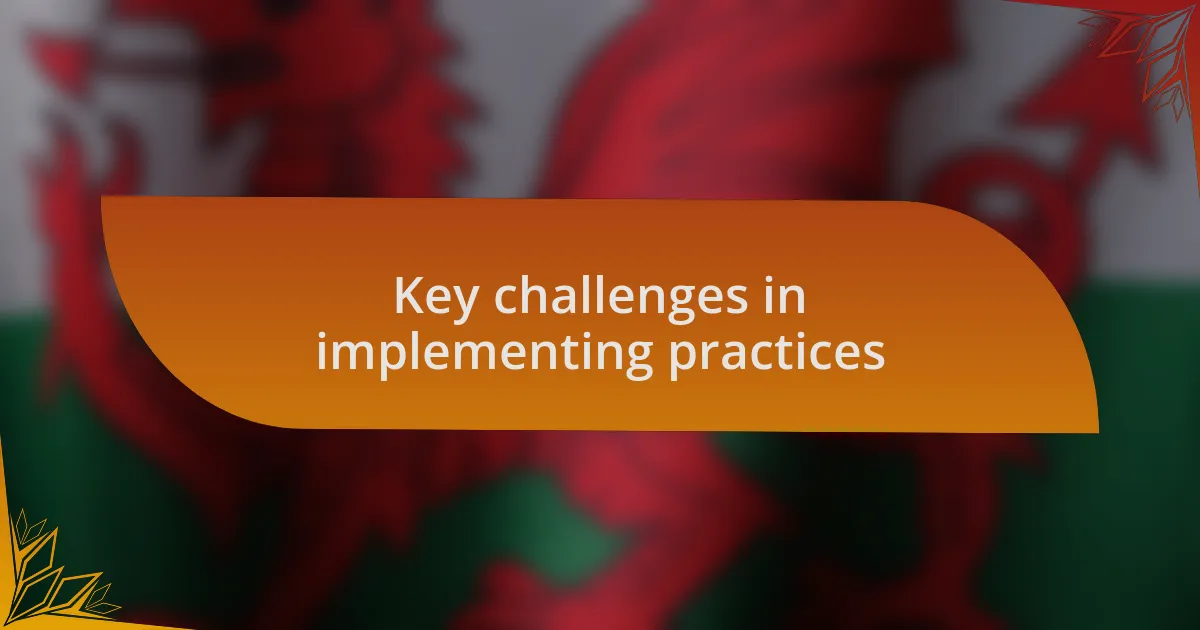Key takeaways:
- Restorative justice focuses on healing and accountability, fostering open dialogue among victims, offenders, and community members.
- These practices empower victims by giving them a voice and promoting empathy, which can lead to transformative realizations among offenders.
- Key challenges include skepticism towards restorative practices, the emotional impact on participants, and logistical difficulties in organizing meetings.
- Success stories demonstrate the potential of restorative justice to build understanding and foster healing, transforming adversarial relationships into collaborative ones.

Understanding restorative justice practices
Restorative justice practices focus on healing and accountability rather than punishment. I remember a time when I attended a community circle that facilitated open dialogue among a group affected by a conflict. The emotional atmosphere was palpable; everyone shared their experiences, and I felt an overwhelming sense of connection and understanding fostered in that space.
These practices involve bringing together offenders, victims, and community members to address the harm caused by crime in a collaborative way. Have you ever had a conversation that turned a misunderstanding into an opportunity for growth? That’s the transformative potential of restorative justice. It’s not just about righting a wrong; it’s about rebuilding trust and relationships.
I’ve seen firsthand how restorative justice can empower individuals to take responsibility for their actions while giving victims a voice in the process. It’s fascinating how these dialogues often lead to deeper insights and genuine remorse, creating pathways for healing that traditional punitive measures simply cannot achieve. How can we expect true resolution without understanding the human experience behind the actions?

Benefits of restorative justice approaches
Restorative justice approaches cultivate a sense of community that can be profoundly healing for both victims and offenders. I recall a case where a young man, after being confronted in a restorative meeting, shared how he never considered the impact of his actions on the victim’s life. Witnessing that moment of realization was powerful; it demonstrated how these practices can significantly alter perceptions and foster empathy. Isn’t it interesting how understanding someone else’s pain can truly change hearts?
Moreover, these approaches actively involve victims in the healing process, giving them an opportunity to express their feelings and needs. I remember a session where a victim shared her story, and you could feel the weight lift as she articulated her emotions. The tears flowed, but with them came a newfound sense of empowerment. This isn’t just about punishment; it’s about reclaiming one’s voice and participating in one’s own healing journey. Could there be a more profound form of justice than that which restores dignity?
By focusing on healing rather than retribution, restorative justice often leads to reduced recidivism rates. I’ve seen studies that highlight this trend, and it aligns with what I’ve witnessed in the field. When offenders confront the consequences of their actions and work towards making amends, it instills a sense of accountability that punitive measures rarely achieve. Isn’t it remarkable how creating spaces for dialogue can actually contribute to lasting change in behavior?

My experiences with restorative processes
Whenever I participate in restorative processes, I find that the atmosphere is charged with honesty and vulnerability. A memorable experience was when a group of us facilitated a discussion between a victim and the offender in a high-stakes case. The raw emotion in the room was palpable, and the victim’s courage to confront her pain head-on was inspiring. It made me wonder: how often do we shy away from the discomfort of such conversations in everyday life?
I’ve also realized that every restorative meeting is unique, shaped by the individuals involved. During one session, an offender expressed regret in a way that surprised even me. He connected his actions to his own traumatic history and sought to make amends by volunteering in the victim’s community. Isn’t it fascinating how complex narratives can emerge when we allow space for dialogue?
Perhaps the most profound aspect I’ve experienced is witnessing the transformation not just in the participants, but within myself. As I engage in these processes, I often reflect on my own biases and beliefs about justice. It challenges me; it’s discomforting yet enlightening. How common is it to reassess our views on justice and accountability through the lens of others’ experiences? This ongoing journey of reflection makes restorative justice a continuous learning opportunity for both the participants and facilitators alike.

Key challenges in implementing practices
Implementing restorative practices is often hindered by entrenched skepticism from those who see traditional punitive measures as more effective. I recall a session where community members were openly resistant to the idea of bringing together victims and offenders, fearing it might undermine accountability. How can we bridge that gap in understanding when the fear of vulnerability looms large?
Another notable challenge is the emotional toll these processes can take on participants. I remember sitting in a circle where emotions ran high; an offender visibly struggled with guilt while a victim wrestled with pain. It made me question: are we adequately preparing participants for the emotional rollercoaster, or are we leaving them to navigate those waters alone?
The logistics of organizing restorative meetings also poses a significant hurdle. I once facilitated a session where the schedules of all involved seemed impossible to align. It made me realize that even with the best intentions, the practicalities of bringing people together can derail the process. How often do we overlook the importance of timing and support when aiming for meaningful dialogue?

Success stories from my journey
One success story that stands out in my journey occurred during a restorative circle I facilitated between a young offender and a victim of theft. Initially, both were hesitant and defensive. However, as the conversation unfolded, they began to share their stories—each revealing their vulnerabilities. By the end of the session, they embraced a mutual understanding that not only led to an apology but also resulted in unexpected friendship. It made me realize: can empathy truly reshape relationships?
Another impactful moment happened when a community group united to address a series of burglaries. Inspired by the restorative justice approach, they organized a community event where victims and offenders interacted in a safe space. Witnessing the healing and collaboration that emerged was transformative; the offenders took accountability, while victims shared their feelings. This case reinforced my belief that proactive dialogue can heal deep-rooted community wounds. What if more communities embraced such initiatives?
Lastly, I recall a powerful experience with a family whose loved one had been significantly affected by crime. Through restorative practices, they engaged in a process that allowed for honest expression of grief and anger. As tears were shed, walls came down, and a sense of peace began to surface. Seeing their transformation from bitterness to healing reminded me of the potential for restoration—could we replicate this model in more contexts to foster healing beyond individual cases?